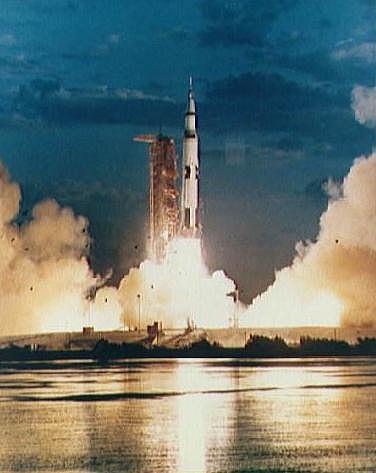
Posted on 03/16/2005 6:03:51 PM PST by KevinDavis
President Bush has called upon NASA to implement a human lunar exploration program with the objective of both supporting operations on the Moon and developing the technologies to enable piloted Mars missions. The question is: how should this be done?
Three central issues that need to be addressed are launch strategy, Lunar mission mode, and method of evolution from Moon to Mars exploration capabilities.
With respect to the launch issue, the key question is whether or not we need a heavy lift vehicle (HLV). Currently, those opposed to such development have advanced an argument for a quadruple launch, quadruple rendezvous (QQ)mission architecture employing medium lift vehicles (MLVs). As the success of failure of the program depends upon the practicality of its launch strategy, this concept needs to be carefully scrutinized.
(Excerpt) Read more at marssociety.org ...

Withdraw from the 1967 Treaty on the Ownership of celestial objects and establish private property in space.
Amen......
How much water will have to be lifted into space to be transported to Mars?
Give the Job to BURT RUTAN, he will figure a way to do it cheaper and better, without the need for NASA, Waaaaaaaaahhhhh,
I think Burt has plans to build rockets to Mars..
I nominate Burt Rutan to take over NASA, LOL!
Zubrin completely misses it on economies of scale, bigger is not more economical if you're only launching 2-3 times a year.
A medium-lift launcher that has a high launch rate will trump all of the supposed economic advantages of a HLV.
When you factor in the costs of developing a HLV, possibly a shuttle-derived HLV, it quickly becomes a shuttle program on steroids in terms of costs.
When there is enough of a market to support a decent flight rate for a HLV, then one will be built, and NASA doesn't need to build it, they just need to be another paying customer.

My best man works at Michoud and told me that the flyaway cost for an ET was $42 Million. Spend another $58 Million to replace the SOFI and configure the inside for in-orbit conversion, (mind you this is not new think just check SSI) and you'll have the backbone for a lunar base!
Granted, at first its all uphill. BUT once they achieve manned Saturn orbit, and strap ionic motors onto a couple of 1/4 mile wide chunks of Saturn ring, its all downhill from there. How much water do you think is in a 1/4 mile wide chunk of Saturn ring? It'd be my guess that there'd be plenty of fuel in something like that too.
Robert Zubrin, who is part genius, part kook, has explained in the past why a lunar base is unnecessary...but I dunno if I agree any longer. I think it would be beneficial.
I had that mindset also. However, the more I think about I think a lunar base is benefcial.
By establishing a strong space program and going to Mars, and going big, we can defeat the infestation of terrorism in the world. It will take a generation or two because the way to do this is to show the young people that there is no comparison between what their terorism can do versus what free people working constructively can do. When the children of terrorists look around and see that their enemy is sending people to Mars and accomplishing all these amazing things while terrorists are accomplishing nothing, they will use their power of thought and decide to live life and join those who are doing great things, not just end up pizza toppings as a goal
For the Mars base none. For the trip out, and the trip back for those who wish to return there will be some supplies to be carried in the hold. Even with recycling one would want some reserves because the trip would be two years between ports, and if the Mars station is not yet readied robotically the entire trip out and back could be four years. Plan to be self-sufficient for four years.
Yes, withdraw from the 1967 UN Outer Space Treaty.
Say that to some NASA engineers and you would swear their brains just turned to pea soup.
Seems like too many vehicles and coordinated launches, rendezvous, orbit insertions, etc.
Too many possible components & systems to fail on multiple platforms. Power supplies, propulsion, guideance/tracking, life support, hard/software, the human factors, the 10$ bolt failure...
Disclaimer: Opinions posted on Free Republic are those of the individual posters and do not necessarily represent the opinion of Free Republic or its management. All materials posted herein are protected by copyright law and the exemption for fair use of copyrighted works.